
The CARE Course
Critical Procedure - Shoulder dystocia
Back to Critical Procedures - Index page
Home
For all procedures, ask yourself, 'does this need to be done 'now vs later'? And should this be done by 'me vs someone else?' Very often the answers will be 'now' and 'me' - so read on!
Shoulder dystocia
Description
Procedures to use in shoulder dystocia.
Be calm.
Time is of the essence but urgency is not counted in seconds. (In a series of 134 shoulder dystocias, all were delivered in under 8 minutes and less than 2% had a pH under
7.00).
Try each step for about thirty seconds to a minute and then move on.
Indications
Shoulder dystocia.
Contraindications
None.
Equipment
Mainly your hands and time.
Procedure
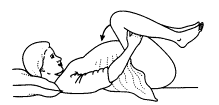 |
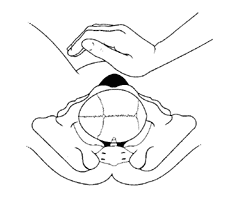 |
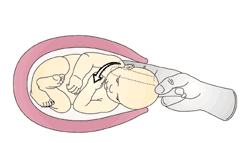 |
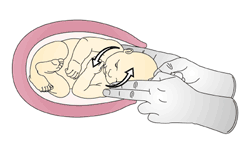 |
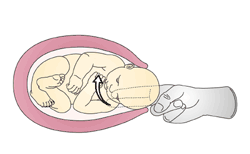 |
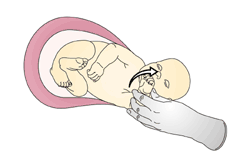 |
Avoid the 4 P's Don't Push, Pull, Pivot or Panic!
- don't Push on the Fundus
- don't Pull on the head
- don't Pivot the neck on the maternal coccyx
- don't Panic!
There is the ALARMER mnemonic below....but you need "fast and easy", and the quickest chance of success.....which is simply remembering
"Legs up, Rock and Roll"
Legs up = hyperflex mom's hips/legs - best with assistants, or mom can pull up if no-one can help
Rock = heel of hand just above pubis, rock on posterior aspect of shoulder - cpr like motion (trying to rotate)
Roll = get mom up on all 4's
(from there you can get move into the rotational manoeuvres described below)
Hopefully mom's bladder is empty - if not then catheterise to empty whilst trying the manoeuvres described.
ALARMER mnemonic
E ach manoeuvre should take no more than 30-60 seconds . With a totally occluded umbilical cord Fetal pH drops by 0.04 per minute.
Perform each manoeuvre calmly, in a controlled but firm manner. Success
is usually achieved early in the sequence.
- A – Ask for help.
- L – Lift maternal legs hyperflexed to the chest ( McRoberts manoeuvre ) 42% success. Video here.
- A – Anterior shoulder disimpaction. Suprapubic pressure with heel of hand, on and behind the shoulder. Initially constant but can rock in a motion similar to CPR. 91% success
- R – Rotate baby’s shoulders (anterior shoulder disimpaction can be continued if you have a helper, during the following manoeuvres)
- a) Push on the back of the anterior shoulder first
- b)Add a push on the front of the posterior shoulder in the same direction
- c) If no movement, reverse the direction of the push
- M - Manual removal of the posterior arm.
- E – Episiotomy may make more room to put your hand in the vagina
- R – Roll mother onto all fours (some would advocate doing this after the the first step) - up to 58% success if used alone.
The total of these manoeuvres should take a maximum of 7 mins. Which could result in a drop of fetal blood gas by 7x0.04 = 0.28 pH cord gas.
If these measures fail then symphysiotomy (see below) may be required.
Manoeuvres of last resort
The Zavanelli manoeuvre
This entails replacing the fetus into the pelvis and proceeding to Caesarean section. Obviously, this is only possible if C-section is available quickly. The technique involves rotating the foetal head into a direct occiput anterior position, then flexing and pushing the vertex back into the birth canal, while holding continuous upward pressure until Caesarean delivery is accomplished. Tocolysis may be a helpful adjunct to this procedure, although it has not been proved to enhance success over cases in which it was not used.
Symphysiotomy
Skin prep. eg chorhexidine
2% lidocaine with suitable injecting needle
Dressing tray and drapes
Scalpel
Sterile gloves
Anaesthetise the area over the pubic symphysis and down to the ligament.
Insert a urinary catheter and use your finger intravaginally to displace the foley and the urethra laterally to prevent urinary injury.
Incise through the supra pubic fat and divide the ligament holding the symphysis pubis.
Take care to not cut your intravaginal fingers. The pelvis will usually open about a thumbs breadth, releasing the fetal shoulder. The pelvis can be strapped with a wide belt until it heals or the symphysis can be reapproximated with internal
fixation.
Potential pitfalls
Avoid the 4 P's Don't Push, Pull, Pivot or Panic.
"Plan B"
There is no "Plan B" beyond the above. Think early about the possibility of needing symphysiotomy or c-section and getting help if needed.
